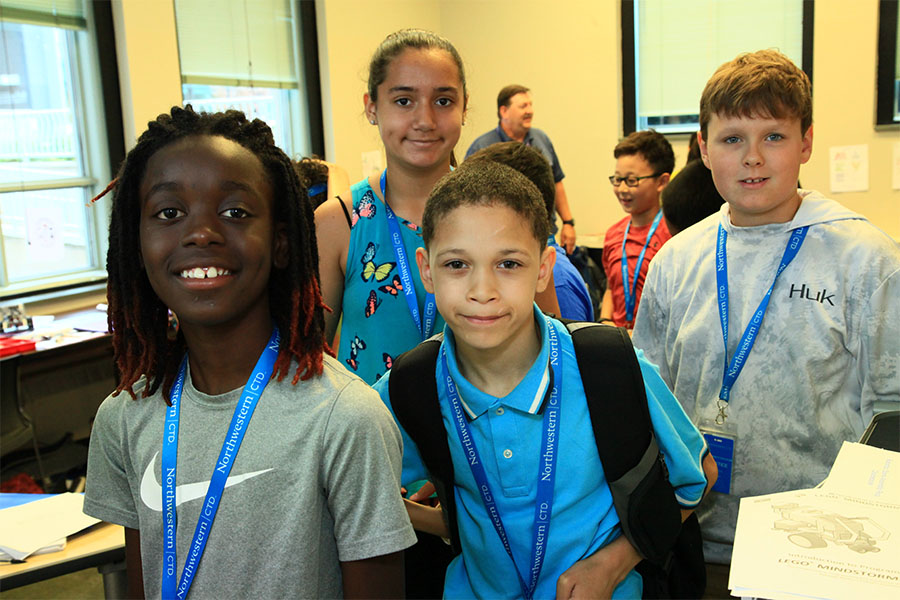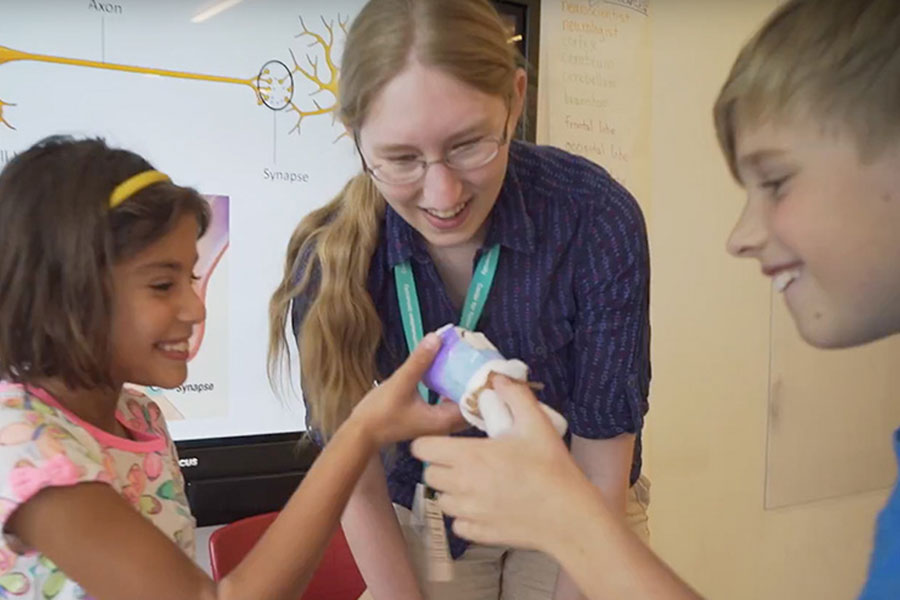Cutting Edge “Tangible Tech” for Young Coders
By Ann Gadzikowski, CTD Early Childhood Coordinator
As a former preschool teacher, I know that young children need to move to learn. For example, they learn addition by counting their fingers, they learn to tell stories by playing with puppets, and they learn to write by scribbling across the whole page with big, fat pencils. A constructivist classroom, based on the foundational theories of Piaget and Vygotsky, supports active and kinesthetic learning through creative and collaborative projects. In our CTD Leapfrog courses we emphasize hands-on project-based learning for children age 4 through grade 3.
In recent years I’ve been fairly obsessed with the question “What does computer science instruction look like in a constructivist classroom?” Much of my work at CTD is focused on figuring out how can we teach children about abstract concepts, such as coding, using hands-on and kinesthetic projects. One answer is robots. Child-friendly robotic devices bring digital concepts into the real world and provide opportunities for even very young children to learn about coding and computer science.
A new breed of educational robotic tools called “tangible tech” are now available for early childhood classrooms. These tangible tech devices teach what Marina Umaschi Bers of Tufts University, leader of the ground-breaking DevTech Research Group, would call “powerful ideas,” the problem-solving and metacognitive learning concepts that will support a lifetime of high level critical thinking.1
Some examples of tangible tech devices include:
- Bee-Bots https://www.bee-bot.us/
- Kibo Robots http://kinderlabrobotics.com/kibo/
- Cubelets http://www.modrobotics.com/cubelets/
- Ozobots http://ozobot.com/
Last summer, CTD Summer Leapfrog students piloted one new tangible tech device, the Cubetto Playset. The kit features a charming robot named Cubetto who looks like a toy but actually provides an exciting learning opportunity for children interested in exploring technology, robotics and coding. I first learned about Primo, a U.K. based startup dedicated to making innovative educational tech toys, during a webinar sponsored by the TEC Center at the Erikson Institute last spring called, “Seeing into the Future: Introducing Coding to Young Children.”
We were excited to get involved and collaborate with this cutting edge group. Last summer, we piloted the kits and invited expert guest speakers, including Northwestern professor Michael Horn, an expert on tangible tech who previously worked with the DevTech Research Group at Tufts, and Frances Judd, who had led the Erikson Institute webinar, to delve in and work with us and our students.
As we prepare for launching a new slate of summer technology courses, the Leapfrog team has been leading a series of teacher workshops called “Tech Beginnings: How to Introduce Young Students to Coding, Animation & Robotics.” Participants have included teachers and tech coordinators from both public and private schools in Illinois and Wisconsin. The Cubetto Playset has been one of the tools we’ve used to help teachers develop ideas for developing curriculum activities that teach computer science concepts such as sequencing, looping, and functions.
If you don’t have access to a tangible tech robot in your home or classroom, here’s a suggestion for how to bridge the gap between the virtual world and the real world for your children or students. Try one of the free web-based tutorials that are part of the code.org “Hour of Code” library, such as the Lightbot tutorial. Children as young as four will enjoy these game-based learning experiences, especially when working with a parent, teacher, an older sibling or a student mentor. Afterwards, add a tangible, kinesthetic component to this learning experience by inviting the children to build a three-dimensional model of the game using blocks or cardboard. Use a small toy to represent the Lightbot character in the game and move about the path, flowing a sequence of commands. Or, if space allows, create a large grid on the floor using painter’s tape or chalk and challenge children to act out the movements of the robot, navigating the grid and following a sequence of commands, in a manner similar to the coding process.
For more on coding for the Preschool set, check out the Spring 2015 issue of CTD’s Talent Newsletter.
Sidebar:
1 Bers, M. U. (2008). Blocks to robots: Learning with technology in the early childhood classroom. New York: Teachers College Press.

